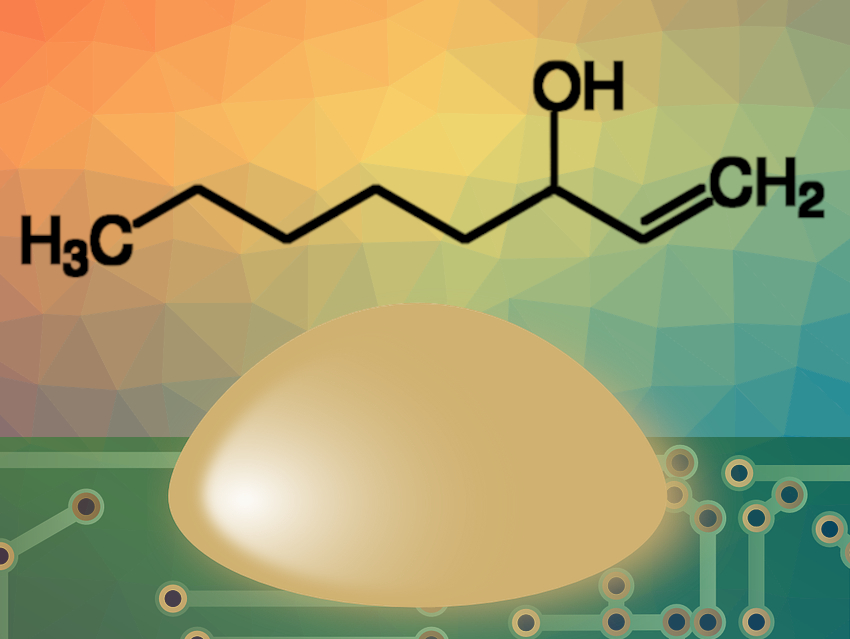The sense of smell can provide useful information about the chemical composition of the surrounding air. However, compared with other sensory inputs, such as optical or acoustic signals, the detection of odors can be difficult to replicate artificially.
Shoji Takeuchi, Kanagawa Institute of Industrial Science and Technology and The University of Tokyo, both Japan, and colleagues have developed biohybrid sensors that combine olfactory receptors from insects with artificial systems to create highly sensitive volatile organic compound (VOC) sensors. The team used cell-free olfactory receptors from the yellow fever mosquito (A. aegypti), which were introduced into a lipid bilayer formed by contacting two droplets. The response of these receptors to chemical compounds can be observed by electrophysiological measurements, i.e., they can be translated to electrical signals.
The team combined this biohybrid device with a special gas flow system that ensures optimal contact between the VOCs to be detected in the gas phase and the olfactory receptors in the liquid droplets. This enables a high sensitivity in the resulting detector. The researchers used microscale slits underneath the droplet to introduce the gas into the fluid. This setup allows the efficient transfer of target molecules into the liquid phase.
The team used the sensors to detect 1-octen-3-ol (pictured), which is a component of human breath that can attract mosquitoes. The VOC sensors can detect concentrations at the parts-per-billion level. According to the researchers, using multiple olfactory receptors could make it possible to recognize more complex mixtures of VOCs.
- Highly sensitive VOC detectors using insect olfactory receptors reconstituted into lipid bilayers,
Tetsuya Yamada, Hirotaka Sugiura, Hisatoshi Mimura, Koki Kamiya, Toshihisa Osaki, Shoji Takeuchi,
Sci. Adv. 2021, 7, eabd2013.
https://doi.org/10.1126/sciadv.abd2013




